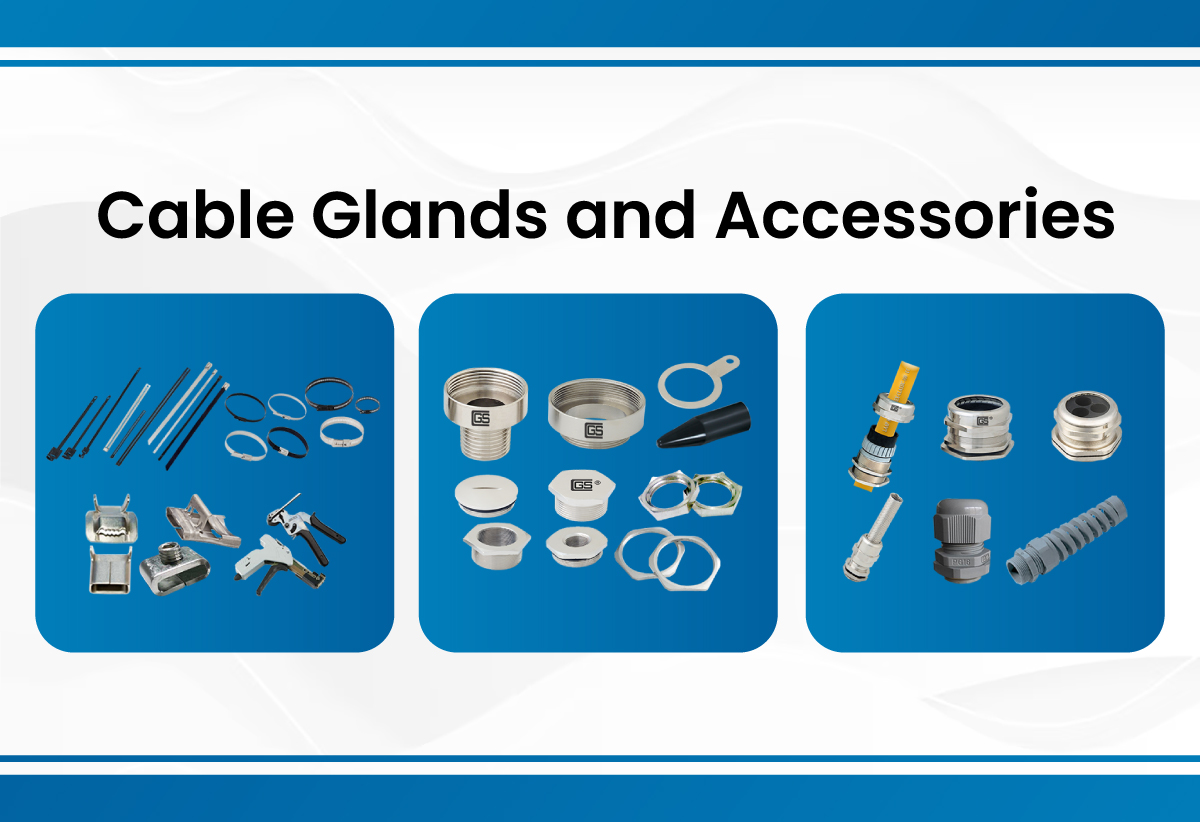Modern infrastructures rely on electrical cables, which power homes, businesses, transportation, industrial machinery, telecommunications, automation systems, oil refineries, etc. Therefore, all cables should be installed and secured properly to prevent damage, malfunctions, and potential electrical hazards.
Cable glands are one of the most useful electrical components for electronic systems that need to function in challenging industrial environments. By investing in a cable gland and cable protection product, businesses can ensure that their critical electrical equipment and cable fittings are properly safeguarded against the elements.
There are not all industrial applications that need cable glands, but in cases where systems are regularly subjected to excessive stress, plastic or metal cable glands can be significantly beneficial. This electric wiring component can help to avoid the costs and lost efficiency associated with breakdowns and system downtime and is therefore invaluable.
Here, we will delve into the details of cable glands, covering their types, installation methods, and key considerations for selection.
What are Cable Glands?
Cable glands, also known as cable connectors or cable fittings, are electrical connectors designed to attach and secure the ends of an electrical cable to the equipment. They provide strain relief and seal out dust, moisture, and other contaminants. Cable glands are essential in maintaining the integrity of the electrical system and ensuring safe operation.
Types of Cable Glands
There are four primary types of cable glands: single-compression cable glands, double-compression cable glands, flexible hose cable glands, and PVC cable glands. Both single and double-compression cable glands are further categorized into three types: light-duty cable glands, weatherproof cable glands, and flameproof cable glands.
Apart from that there are several other types of cable glands, each suited for different applications and environments. Here we highlighted based on their classification.
- Based on Functionality: Armoured Cable Glands, Unarmoured Cable Glands, Waterproof Cable Glands, Heat-resistant Cable Glands, Metric Cable Glands, NPT Cable Glands.
- Based on Industrial Application: Electromagnetic Compatibility (EMC) Cable Glands, Marine Cable Glands, Electric Cable Glands, Fire-Stop Cable Glands, Explosion-Proof Cable Glands.
- Based on Standard: Type A Cable Glands (A1, A2, A3, A4), Type B Cable Glands, Type C Cable Glands, Type D Cable Glands (D1, D2), Type E Cable Glands (E1, E2).
- Based on Certified: ATEX Certified Cable Glands, IECEx Certified Cable Glands, PESO Certified Cable Glands.
- Based on Material: Metal Cable Glands, Brass Cable Glands, Stainless Steel Cable Glands, Aluminium Cable Glands, Plastic Cable Glands, Nylon Cable Glands, Synthetic Rubber Cable Glands.
How to Select the Right Cable Gland?
Selecting the right cable gland involves considering several factors:
- Installation: Consider the nature of installation such as indoor, outdoor, domestic, commercial, or industrial.
- Cable Type: The type of cable being used will determine the appropriate gland. Ensure compatibility with the cable diameter and type.
- Environment: Consider the environmental conditions, including temperature, moisture, and exposure to chemicals or explosive gases.
- Material: Choose a material that offers the necessary durability and corrosion-resistance for the application.
- Ingress Protection (IP) Rating: Ensure the gland provides the required level of protection against dust and water ingress.
- Certification: For hazardous environments, ensure the cable gland meets relevant safety certifications.
Installation of Cable Glands
Cable Glands installation procedures should always be followed according to the manufacturer’s instructions. To ensure a secure, reliable connection, the installation of a cable gland requires attention to detail. Proper installation of cable glands is paramount to ensuring the longevity and safety of electrical systems. The installation of cable glands varies depending on the type, but the fundamentals are the same as follows:
- Open the gland: Begin by opening the cable gland and detaching the nut/washer.
- Prepare the cable: Strip the cable to the required length, ensuring no damage to the inner conductors.
- Fit the gland: Insert the gland components into the cable in the correct order.
- Secure the Gland: Tighten the gland nuts to secure the cable and ensure a proper seal.
- Check the Seal: Verify that the gland provides a secure seal around the cable and the enclosure entry.
- Maintenance and inspection: Regular maintenance and inspection of cable glands are essential to ensure their continued effectiveness. Check for signs of wear, corrosion, or damage and replace any faulty glands promptly.
These steps will ensure proper and secure cable gland installation, providing effective protection for electrical systems.
Conclusion
The cable gland is a vital component for several electrical installations, providing protection and ensuring the integrity of electrical wiring connections. By understanding the different types, and applications, and by following proper installation and maintenance procedures, you can ensure the safety and reliability of electrical systems.
In India, there are many leading suppliers, distributors, exporters, and manufactures of cable glands, and accessories. To meet specific requirements, complex applications or industry standards, should choose a highly experienced and reliable cable gland manufacturer. At Sigma Industries, we provide a complete range of cable glands and custom cable glands, based on customer specifications. Whether you are looking for high-quality, reliable, and cost-effective cable glands, precision metal components, or cable gland accessories, you can rely on us as a Reputable Cable Gland Manufacturer in India. For more information request a quote or contact us.
